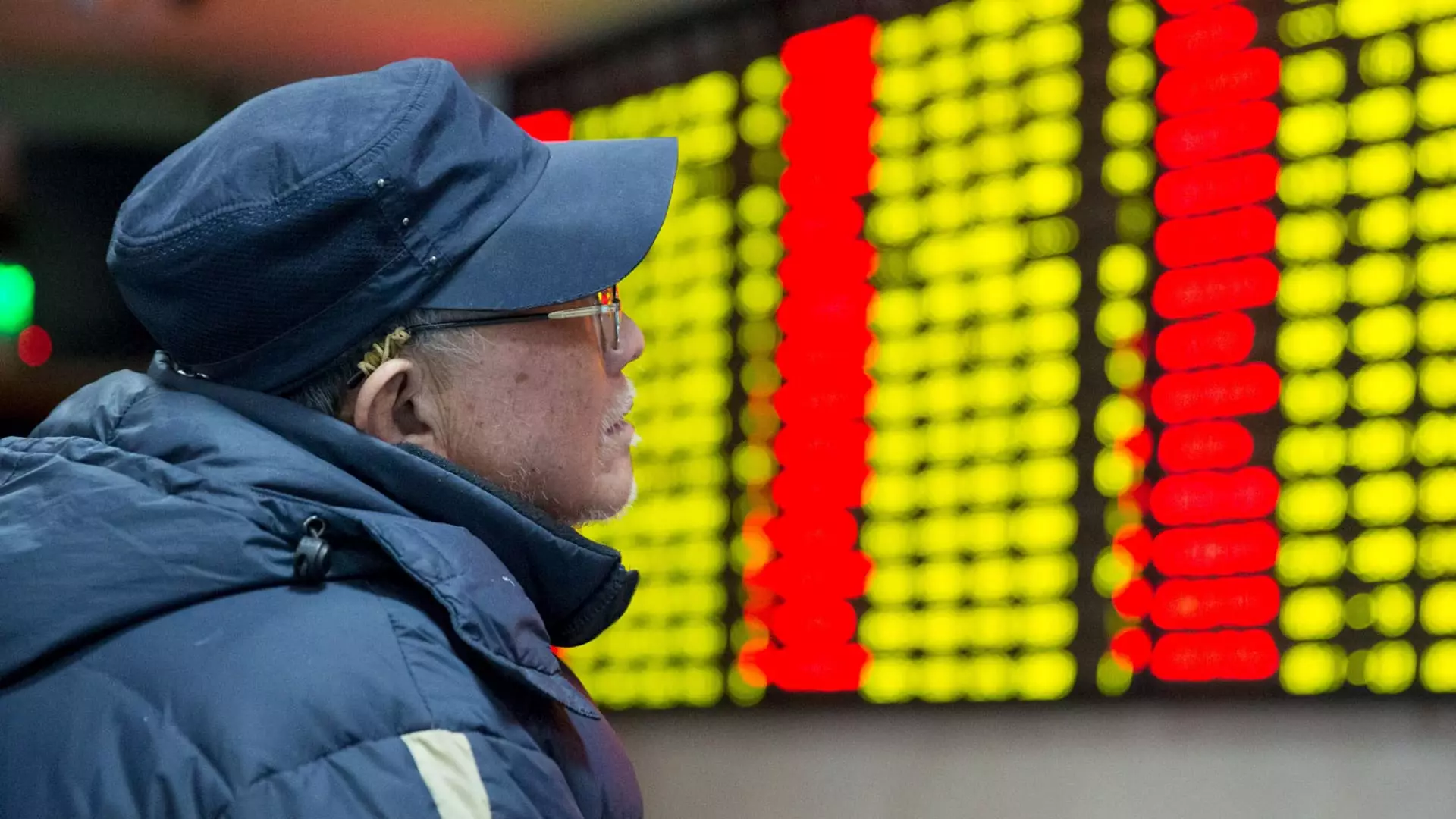China’s stock market has experienced a dramatic resurgence, ignited by the government’s recent economic stimulus plans. The CSI 300 index, which encompasses large-cap stocks from Shanghai and Shenzhen, climbed over 15% in just one week—marking its most remarkable performance since 2008. This sudden upward swing follows a tumultuous period where the index plummeted to its lowest points in six years earlier this year. The swift recovery signals a potential shift in investor sentiment, suggesting that we may be witnessing the early stages of a market rebound.
Experts like Wendy Liu, JPMorgan’s chief equity strategist for China, assert that high-quality stocks might emerge from this slump ahead of the overall market recovery. The firm identifies specific undervalued stocks poised for near-term gains amid this revival. Such investment strategies emphasize a selective approach, focusing on firms trading at reasonable valuations rather than pursuing speculative opportunities in an uncertain macroeconomic landscape.
JPMorgan has pinpointed several stocks ripe for growth, including Tsingtao Brewery, the retailer Miniso, and machinery company Zhejiang Dingli. These selections underscore a growing tendency among investment firms to recommend stocks within the consumer and manufacturing sectors that are trading well below their previous highs.
Similarly, Bernstein’s Asia quantitative strategist Rupal Agarwal endorsed the notion of increasing exposure to Chinese equities but urged caution. She recommends waiting for definitive indicators of consumer and property sector recovery before committing to long-term positions. Analysts from Bernstein have singled out Tal Education, an U.S.-listed after-school education service, and the EV manufacturer Seres as enduring beneficiaries of China’s domestic market recovery.
The evolving landscape has attracted attention from prominent hedge fund managers. Billionaire investor David Tepper recently communicated his bullish stance on Chinese equities during a CNBC appearance, signifying a marked endorsement from influential financiers. Tepper’s perspective is notable, particularly his dismissal of the potential impact of U.S. tariffs and his assertion that current Chinese valuations present compelling opportunities relative to U.S. markets.
He highlighted the juxtaposition between the price-to-earnings (P/E) ratios of prominent Chinese firms and their respective growth rates, which, he argues, make them more attractive compared to U.S. stocks that exhibit higher P/E ratios. This sentiment points to a strategic pivot among major investors aiming to capitalize on perceived undervaluation in the Chinese market.
The shift in sentiment can be traced back to recent policy announcements from the People’s Bank of China (PBOC). Governor Pan Gongsheng’s announcement of interest rate cuts, alongside government leaders’ calls to address the ongoing real estate slump, has injected optimism into market participants. Scott Rubner from Goldman Sachs noted a surge of buying activity from short-term traders, marking eight consecutive days of purchases. The growing appetite for Chinese stocks reflects a significant turnaround considering that global mutual funds’ allocation to China is at an historic low, indicating that the current demand is largely driven by recent developments.
Despite this positive momentum, many investors remain skeptical about the prospects for an unbridled market rally. Factors such as unsteady economic growth, persistent debt levels, and geopolitical tensions continue to temper enthusiasm. Most traders are adopting a cautious stance as they await concrete clarification from the government on newly proposed fiscal policies.
While the surge in stock prices presents a bullish narrative, it’s essential to recognize the mixed economic indicators and the complex landscape of Chinese consumer behavior. Retail investors play a crucial role in the mainland stock market where trading patterns are susceptible to government policies and external market conditions. Some observers argue that systemic risks—especially those tied to the property market and consumer confidence—could undermine this recovery.
As investors weigh their options, the structural changes in policy may create additional paths for growth. The recent easing of borrowing terms and potential support for institutional stock purchases could also bolster trading activity in the near term.
The resurgence of China’s stock market, as evidenced by the CSI 300’s rapid recovery, aligns with government efforts to stabilize and invigorate the economy. While there exists a palpable enthusiasm driven by strategic stock recommendations and influential hedge fund endorsements, the road to a sustainable recovery remains fraught with uncertainties. Observers will closely monitor the unfolding developments, looking for signs of sustained consumer confidence and proactive policy structures that reassure both domestic and international investors. Global financial participants will continue to navigate this dynamic landscape, and the outcomes over the coming months will play a significant role in shaping perceptions of China’s economic health.

